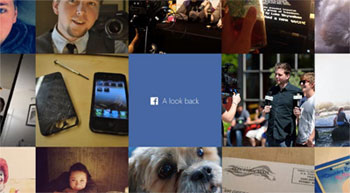 For its 10th anniversary, Facebook sent each of its users a customised video, highlighting their most popular posts and pictures since they joined. The series was a hit: over 200 million people downloaded, watched and then shared their version.
For its 10th anniversary, Facebook sent each of its users a customised video, highlighting their most popular posts and pictures since they joined. The series was a hit: over 200 million people downloaded, watched and then shared their version.
It was the world’s first personalised video campaign to go viral. But soon, personalised videos are going to become a standard social media marketing tool.
How do I know? Firstly, because all digital communication is rapidly becoming personalised. Most companies would not dream of sending out mass emails that are not personally addressed to their recipient.
Increasingly, they also track individuals’ visits to their websites, sometimes changing the content of ads depending on what pages the visitor has browsed or what content they have downloaded. When representatives contact customers by phone, they can tailor the conversations based on their online behaviour.
By now, you are probably used to Amazon recommending books based on your buying history. Other retailers (now dubbed ‘me-tailers’) now even send offers to shoppers’ mobiles when they visit their store.
Secondly, because personalised videos are already being used, and not just by Facebook.
One of the pioneers is Jan Bilyk, CEO of Laurens Coster, a company that specialises in one-to-one marketing.
At the Technology For Marketing and Advertising show this week, he pointed out that video is an increasingly powerful tool for capturing people’s attention online. 56% of all customer web traffic is now video.

Visitors stay on websites with videos for an average of 350 seconds, compared to 72 for those without. The respective bounce rates are 59% and 87%, on average.
In email marketing, video has been shown to increase click-through rates by up 94%.
But all of this becomes even more potent when the videos are personalised. When an email subject line tells recipients that they have been sent a video that has been prepared just for them, open rates are 40-60% and 80-99% of those recipients actually watch them!
Bilyk recently helped create a personalised video campaign for Poland’s Orange Telecom. Around 2,000 people whose contracts were nearly up received a video which discussed their current plan, usage patterns and bills, and then offered them an upgrade based on their personal circumstances.
You can watch an English translation of the video, published in 2012, here: http://youtu.be/iOKk-IQMRo8
The results? The data showed that every movie was opened on two devices, on average – so recipients were either watching them more than once or sharing them. A third of all those who watched the video proceeded to an order form.
Bilyk says that it took three days to record all the names for the opening of the video. But he says that it is a myth that creating such videos is enormously costly. He estimated that the production of the template – the most expensive part – cost just £5,000. (He did not detail the other expenses.)
So how can companies with that kind of budget use personalised video? Bilyk has five ideas:
- Welcome emails
- Anniversaries
- Up-selling (as in the Orange example)
- Client maintenance
- To address difficult issues
Naturally, as use of personalised videos increases, costs will fall, allowing more companies to take advantage – and gain the ‘wow’ factor.
Do you use videos in your marketing? How do you personalise your own digital interaction with clients? Let us know in the comments!
Miriam Shaviv is director of content at Brainstorm Digital
If you enjoyed this article, you might like:
- What social media trend will be most significant in 2014?
- Is YouTube only for companies with large budgets?
- 21 social media tips you can implement right now





